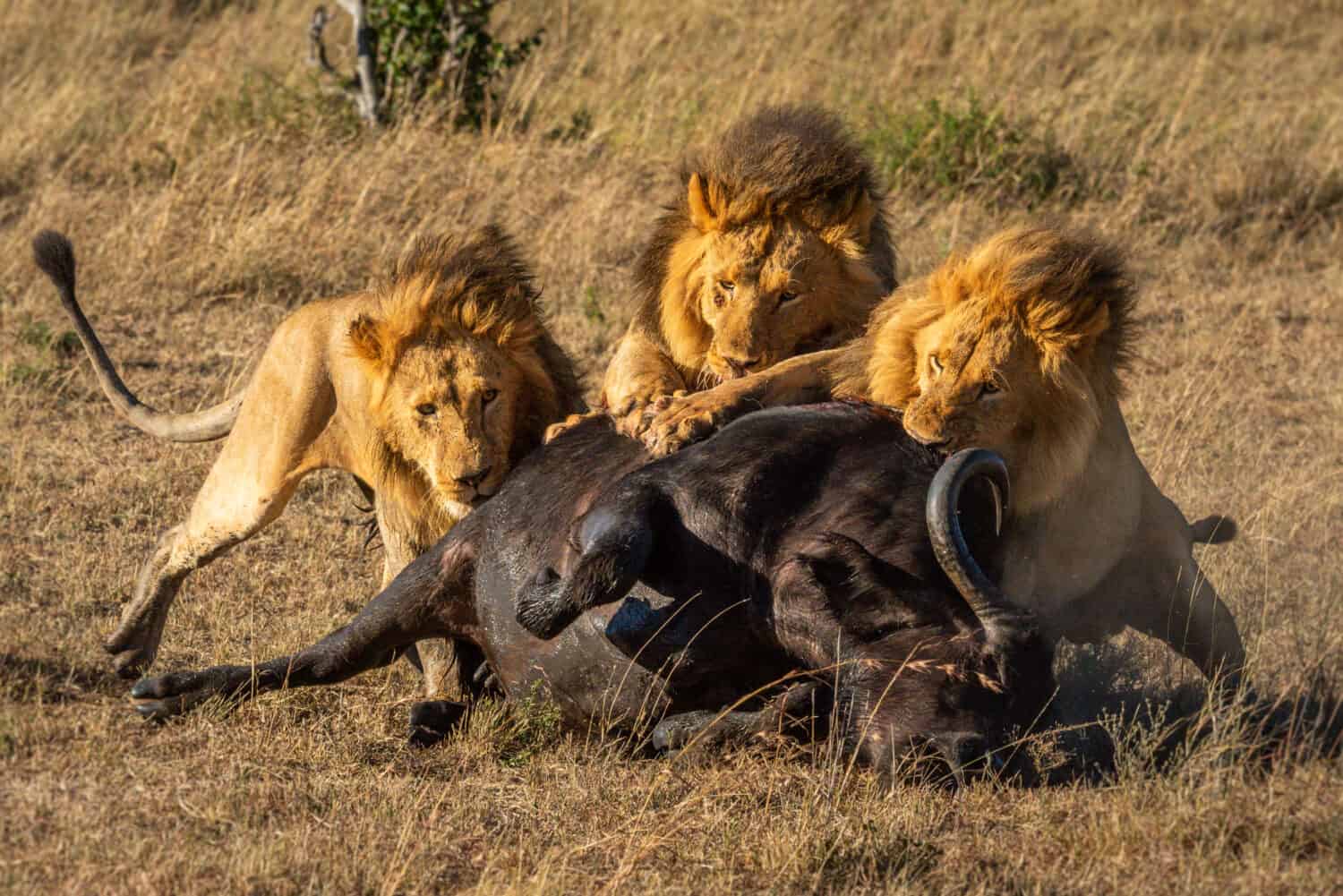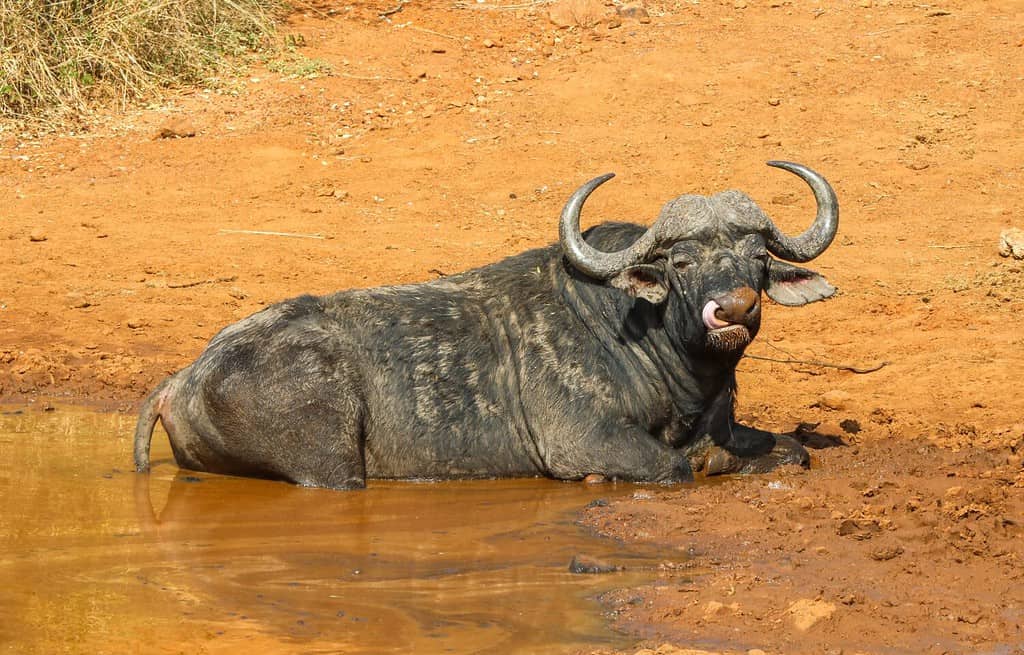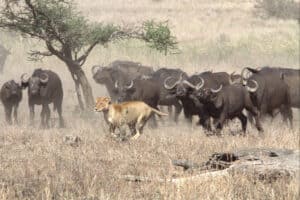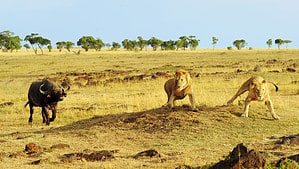Continue reading for our analysis...

Let Cape Buffalo Teach Us All a Lesson in Loyalty
In this awe-inspiring video, witness nature’s incredible drama as four powerful lions launch a relentless attack on a massive cape buffalo. Despite the odds, the cape buffalo fights valiantly but faces grave danger. Just when hope seems lost, four loyal members of the cape buffalo herd make a daring decision to rescue their friend.
As the courageous cape buffalo approach, the startled lions flee one by one, realizing they’re outnumbered. The tide of the battle turns in favor of the cape buffalo, displaying unity and determination.
The victorious cape buffalo gather around their injured companion, encouraging its recovery. In a breathtaking moment, the injured buffalo rises, bolstered by unwavering support. With renewed strength, it joins the herd, reuniting with protective companions.
However, the intense encounter continues. As the cape buffalo regroup and retreat to safety, an ambitious hyena halfheartedly pursues them, enticed by the spectacle.

A lion pride will often target huge prey such as
cape buffalo
in an all-for-nothing gamble. They risk lethal injury for a potential prize that will keep the
whole pride
fed for over a week.
©nwdph/Shutterstock.com
Witness the incredible bond of unity, bravery, and resilience among the buffalo as they defy the odds, proving strength lies in loyalty, not just numbers.
Cooperation Spells Out Life or Death for Predator and Prey Alike!
In the animal kingdom, the power of social cooperation among prey animals becomes evident when they unite against predators, much like the cape buffalo showcased in the video. However, this remarkable phenomenon extends beyond the cape buffalo. As numerous species exhibit similar cooperative behaviors to enhance their chances of survival. Take, for instance, a herd of wildebeest. Through coordinated vigilance and collective defense, they are able to thwart the efforts of predators. This extends to equally coordinated predators such as lions, who rely on their unity for successful hunting. Similarly, meerkats, with their intricate social structures and sentry systems, provide an exemplary display of teamwork against common adversaries. These instances highlight the incredible resilience and strength that emerges when prey animals collaborate, turning the tables on even the most formidable predators.

Buffalo are deeply social creatures who live in huge herds with intricate social dynamics. Here we see two buffalo sharing a tender embrace.
©Mark G Williams/Shutterstock.com
Cooperation among predators is equally crucial when they achieve success in a hunt. Whether it’s a pack of wolves taking down a large prey or a pride of lions coordinating their movements to surround their target, teamwork ensures a higher likelihood of a successful kill. By working together, predators can exploit the strengths and skills of each member. This variation highly improves their chances of securing sustenance for the group. Cooperation allows them to bring down larger and more formidable prey, sharing the rewards of their collective efforts to have a more surefire shot at consistent nutrition.
How Large Are Cape Buffalo?

Cape buffalo, a subspecies of the African buffalo, are not very tall but they have an impressive weight.
©Photography Phor Phun/Shutterstock.com
African and domesticated water buffalo are quite large, although they are not as large as the American Bison, for which they are often confused. Both species of buffalo can reach heights ranging from four to five feet and weigh between 900 to 1800 pounds.
Thank you for reading! Have some feedback for us? Contact the AZ Animals editorial team.






